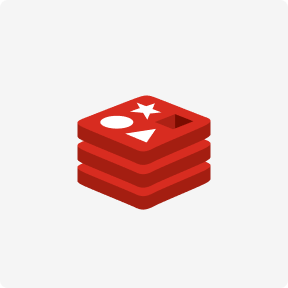This makes it difficult to align everyone working on the product around what customers need and how you will work together to deliver it. With a matrix organizational structure, there are multiple reporting obligations. For instance, a marketing specialist may have reporting obligations within the marketing and product teams. A matrix structure offers flexibility, enables shared resources and fosters collaboration within the company. However, the organizational structure can be complex, so it can cause confusion about accountability and communication, especially among new employees.
- Consider the electric powertrain in the automotive industry—the different manufacturers offer a sample of all of the archetypes.
- To make matters worse, you can’t just download an organizational chart template and apply it to your business because there is no one-size-fits-all solution.
- But too often that coordination occurs only late in design, perhaps even the final testing phase, by which point addressing problems becomes expensive and time-consuming.
- As organizations outgrow project centered organizations they often reorganize into department centered organizations.
- Each team member is partially experienced in many product development fields, but none has deep expertise in a specific branch.
Most importantly, modern organizational structures are better at scalability. They enable a team of 100+ people to function just as well as when that team was half the size. Read on to learn more about the different functions that make up a product development team and how to structure your organization for product development success.
Engineering
Siloed thinking is also eliminated by having product team leaders meet frequently. Here is a quick rundown of a few common ways that organizations structure their product teams. Since a product leader typically leads the cross-functional product team, they are involved in every stage of the product development lifecycle.

How could a transition to new products be built for sites currently focused on legacy products? How will cost and availability figure into the overall network structure? The answers form a long-term site strategy that can help avert a talent crunch.
Organizational agility is on the rise
Don’t have the resources to put together the robust IT team your organization needs? Instead, consider investing in high-power solutions to help your small but mighty team do more with less. PDQ Deploy and Inventory simplify the formerly time-consuming processes of patch and inventory management so that your team can focus on other https://www.globalcloudteam.com/ projects. The PDQ blog and YouTube channel also aim to save you time by gathering sysadmin tips, tricks, and wisdom into bite-sized chunks. The point is that the C-suite has to take a more active role in how software is developed and make investments to build world-class software-development practices in their organizations.
Whether you opt for Waterfall or Agile development directly impacts your workflows and the team composition. A project management methodology shapes up the size of your team, the responsibilities of team members, and the relations within the team. Implementation of Type 1 requires significant organizational changes and a high level of competence in the management of the organization.
Is an Agile Software Development Team a Suitable Fit for Your Business?
A modern company with any intentions toward industry or category leadership must be a great software company at its heart. Leaders of these firms need to have a secure understanding of how software development works and how to create an enabling organization around it. Once you have several development teams formed, you might also need a chief architect. This is the person who coordinates all your teams, builds consensus around a product’s architecture and design, and oversees the general development process from a technical point. The team lead is responsible for a team’s success in a certain software development aspect — be it front-end development or design. They often act as coaches for the team and can work in any position at the company (developers, designers, etc.).

The chief product officer typically ensures visibility and cohesion across the broader product organization. This structure is particularly useful for organizations with complex offerings. Building a product that delights users at every touchpoint of the customer journey requires clear ownership and a solid understanding of what each role on the product development team entails. No matter the products or offerings you are responsible for, delivering a Complete Product Experience (CPE) is what matters in the end. By integrating diverse perspectives and gaining a holistic understanding of every customer touchpoint, you can make better decisions about the product and deliver an exceptional user experience.
Software Development Organizational Structure
To make software an advantage, executives need to be fluent in leading software-development practices and carefully determine how software is integrated into the organization. Most important for executives to get right from the start, however, is making software development a strategic priority, not an afterthought. Another important thing to understand is that you can freely restructure your software teams when you need to.

In summary, the Agile software engineering team structure is less about rigid roles and more about flexible collaboration, breaking down silos, and promoting adaptability to change. Embracing this structure cultivates an environment that breeds innovation, propels delivery speed, and ultimately culminates in elevated levels of customer satisfaction. A projectized or project-based organizational structure creates a dedicated project division within an organization. Project managers maintain sole authority for the project and are assigned dedicated staff who work toward project goals. A quality assurance engineer is a critical part of your software development team because they test the quality of your product and detect any bugs before releasing it into the market.
Types of Project Organizational Structures
It’s a common scenario when a company hires a dedicated team but fails to balance roles and responsibilities. An expert-level software engineer, an architect is the one who makes executive devops team structure software design decisions in an app development team. You will need one if you deal with a software product with complex requirements or legacy software that calls for profound changes.
Department managers work with project managers to properly forecast requirements and equitably assign developers to projects considering the best interests of the corporation. To maintain system integrity, shared platforms, and innovation- and knowledge-sharing across business lines, the company established several central teams. To manage competence (and continue building needed skills), the organization developed a taxonomy of critical competencies, assigned to VPs and managers and governed through an annual planning cycle. With such wide disparities in cycle times, transparency becomes crucial. The lack of it is a problem not only in concept development, but in delaying product launches as well. For complex functions, such as lane assistance, R&D units may have limited ability to measure how mature the product really is.
What’s a typical software development team structure
A functional project organizational structure organizes its hierarchy around traditionally functioning departments. A functional manager heads each department and reports to an executive. These functional managers — not other staff — coordinate the project, and they select team members from each department to support the project, in addition to their functional responsibilities. Turing Teams enable you to build dedicated teams with the right engineering and managerial talent for your success. Also, with Turing Teams, you can hire vetted Silicon Valley-caliber software developers across 100+ technologies like React, Swift, Kotlin, Java, AWS, Python, Ruby, etc. They verify an application from different angles — be it functionality, usability, security, or performance (hence, many types of testing).
